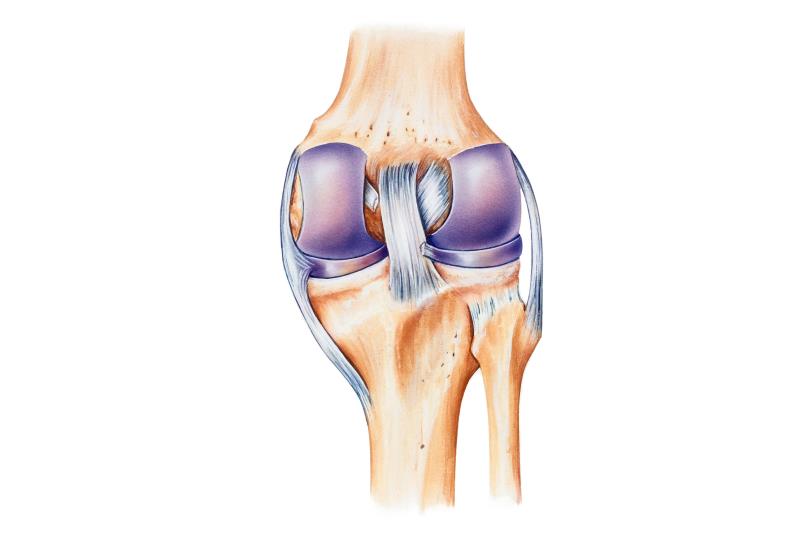
Post hoc results of the phase II FORWARD* study continued to reflect positive structural changes with the recombinant human fibroblast growth factor(FGF)-18 sprifermin, given the substantial dose-dependent increases in cartilage thickness gain and reductions in cartilage loss independent of location in the femorotibial joints (FTJ) of patients with knee osteoarthritis (OA).
“[In the 2-year primary analysis,] sprifermin demonstrated cartilage modification in the total FTJ and in both FT compartments by MRI … [The current findings] expand these results [and continue to show] structural modification of cartilage thickness with sprifermin,” said the researchers.
Current treatments for OA are mostly aimed at mitigating symptoms without targeting structural progression, whereas disease-modifying OA drugs (DMOADs) aim to modify tissue structure alongside clinical improvements. [Age Ageing 2013;42:272-278; Arthritis Rheum 2005;52:3349-3359] The current findings thus underscore the potential of sprifermin as a DMOAD for knee OA, noted the researchers.
A total of 434 subjects were randomized 1:1:1:1:1 to receive placebo or three once-weekly intra-articular injections of either of two doses of sprifermin – 30 μg (S30) or 100 μg (S100) – administered every 6 or 12 months (Q6mo or Q12mo). Healthy reference subjects from the Osteoarthritis Initiative** (OAI; n=82) were used for indirect comparison of changes in the thickening-thinning scores with the study cohort. [Ann Rheum Dis 2020;doi:10.1136/annrheumdis-2019-216453]
Over the 2-year observation period, compared with placebo, mean thickening scores were significantly greater with S100 Q6mo, S100 Q12mo, and S30 Q6mo (856, 881, and 571 μm, respectively, vs 431 μm; p<0.05 for all), while mean thinning scores were substantially lower with S100 Q6mo (-432 vs -766 μm; p<0.05).
Compared with the OAI cohort, mean thickening scores were more than double in the S100 Q6mo arm (856 vs 356 μm), whereas thinning nearly reached the level observed among healthy subjects (-432 vs -335 μm).
Thickening-thinning score ratio was higher in the S100 Q6mo and Q12mo arms vs the OAI cohort (1.98 and 1.48, respectively, vs 1.06). The OAI ratio represents no net cartilage loss or gain, while those in the two sprifermin arms suggest cartilage thickness gain, noted the researchers.
These findings provide strong support for the substantial cartilage modification with sprifermin, particularly the highest doses (ie, S100 Q6mo and Q12mo), they added.
Location-independent analysis: the pros
Despite the capacity of MRIs to measure cartilage thickness change in FT subregions, region-specific analysis cannot elucidate whether cartilage loss is reduced wherever it occurs in an individual joint. [Osteoarthritis Cartilage 2011;19:302-308]
“[Moreover,] clinical trials often do not account for differences in disease laterality, or restrict observations to those with only medial disease, limiting generalization to subjects with lateral OA. In contrast, FORWARD intentionally included patients with both medial and lateral disease,” explained the researchers.
“In this context, location-independent analysis is particularly advantageous, as [it can provide a more sensitive and informative analysis]. It covers cartilage thinning and thickening wherever it occurs in a joint, independent of the compartment and location primarily affected,” they continued.
However, despite the robust design and relatively large sample, the use of healthy subjects from a different cohort and the multiple comparisons may have introduced inaccuracies, noted the researchers. “[Therefore,] caution must be applied when interpreting the data … [Nonetheless,] sprifermin should be evaluated further in clinical trials as a potential DMOAD for knee OA.”